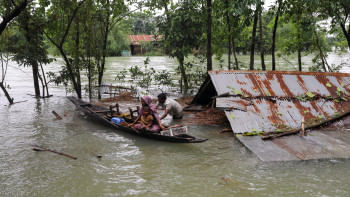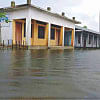What UNOC3 portends for future ocean governance

The third United Nations Ocean Conference (UNOC3), co-hosted by France and Costa Rica, convened in Nice from June 9 to 13 this year. Attended by more than 60 heads of state and government, the conference sought to build on the outcomes of the preceding UNOCs held in New York in 2017 and Lisbon in 2022, and to accelerate progress towards Sustainable Development Goal 14: Conserving and sustainably using the oceans, seas, and marine resources.
UNOC3 concluded with the adoption of the Nice Ocean Action Plan, a two-part outcome comprising a political declaration and hundreds of voluntary commitments from both state and non-state actors. The conference centred on three key priorities: finalising the declaration and action plan, mobilising financial resources, and advancing the ratification of the High Seas Treaty (HST)—formally the agreement under the UN Convention on the Law of the Sea on the Conservation and Sustainable Use of Marine Biological Diversity of Areas Beyond National Jurisdiction (BBNJ). This treaty, open for signature since September 2023, represents a landmark attempt to govern more than half the planet's surface—areas beyond national jurisdiction that remain largely unregulated.
The declaration, titled "Our Ocean, Our Future: United for Urgent Action," reflects growing alarm over the accelerating loss of marine biodiversity, marine pollution, resource depletion, and the impact of climate change on ocean health. It calls for transformative action and acknowledges the ocean's interdependence with other multilateral environmental regimes, particularly those on climate and biodiversity. It reaffirms the global commitment to a legally binding agreement on plastic pollution and reiterates the "30x30" pledge—to conserve 30 percent of the planet's land and marine areas by 2030.
Despite these commitments, reality remains sobering. The Intergovernmental Panel on Climate Change, in its special report on oceans and the cryosphere, issued dire warnings on the deteriorating state of ocean health. Yet, little has changed. Only 2.7 percent of the ocean is currently safeguarded from unsustainable extraction. In Europe, a World Wildlife Fund report reveals that just two percent of marine waters are under active management, despite 11 percent being officially designated for protection. Many observers have described these commitments as little more than political box-ticking. Monitoring and enforcing agreements across the fluid, expansive domain of the high seas remains a formidable challenge.
SDG 14 is also among the least funded of all SDGs. The UN estimates that implementing major ocean-related initiatives will require $175 billion annually over the next five years. So far, only around $10 billion has been pledged. At the conference, the European Commission committed one billion pounds to ocean conservation, sustainable fisheries, and marine science. Germany announced a 100-million-pound initiative to clear underwater munitions in the Baltic and North seas. New Zealand pledged $52 million to strengthen ocean governance in the Pacific. In a move towards innovative financing, Indonesia and the World Bank introduced a Coral Bond to support reef conservation, while the Bloomberg Ocean Initiative pledged support for establishing a secretariat to help implement marine protected areas (MPAs) under the HST.
Covering over 60 percent of the world's oceans, the HST will only enter into force once 60 countries ratify it. So far, more than 50 countries have done so, including 19 during the conference itself. However, several key maritime powers—Australia, Brazil, Canada, China, India, South Africa, and the UK—have yet to ratify. The US signed the treaty in September 2023 but is unlikely to ratify it, having never ratified UNCLOS, the parent convention. This lack of participation by major powers raises questions about the treaty's future enforcement and legitimacy. For small island developing states, which face the greatest threat from ocean degradation, the treaty's swift implementation is vital.
The HST establishes, for the first time, a legal mechanism to create marine protected areas in international waters and impose restrictions on destructive practices such as deep-sea mining and geoengineering. Yet, this governance remains patchy. The International Seabed Authority (ISA), tasked with regulating seabed mining since UNCLOS entered into force in 1994, has struggled to establish effective oversight. Debate continues over whether a global moratorium on deep-sea mining is necessary. Already, 36 countries including both UNOC3 co-hosts have called for such a moratorium. Surprisingly, the declaration itself made no mention of this issue. Delegates expressed concern over recent US moves to bypass the ISA and directly issue permits to companies seeking to extract strategic metals, such as copper, nickel and cobalt, from international waters.
In April, US President Donald Trump signed an executive order calling deep-sea mining "the next gold rush," prompting warnings from the UN secretary-general that the deep sea cannot be allowed to become a new "Wild West." The ISA is expected to address the issue at its upcoming session.
Two deeper concerns ran through the discussions in Nice: the acute funding shortfall for environmental protection and the growing fragility of multilateralism. Funding for multilateral environmental agreements (MEAs) has stagnated, as evidenced in climate and biodiversity negotiations. The experience in Nice was no different. The US withdrawal from global environmental leadership, alongside the downsizing of USAID and recent aid cuts from several European governments, suggests that the international funding landscape will remain challenging. The absence of the US from key multilateral initiatives is likely to cast a long shadow over global efforts to protect the oceans.
For Bangladesh, a maritime nation with significant interests in ocean governance, the stakes are high. The country ratified the High Seas Treaty in September 2024 and has initiated several national marine policies and institutional reforms. Oceanography departments have opened in universities, and the Bangladesh Navy has established a dedicated Maritime University. At the Nice conference, China's vice-president offered support for building marine research and skills in developing countries. Bangladesh should seize this opportunity by establishing a bilateral partnership with China to strengthen its marine science and governance capacities.
Dr Mizan R Khan is technical lead at LDC Universities Consortium on Climate Change (LUCCC).
Views expressed in the article are the author's own.
Follow The Daily Star Opinion on Facebook for the latest opinions, commentaries and analyses by experts and professionals. To contribute your article or letter to The Daily Star Opinion, see our guidelines for submission.

 For all latest news, follow The Daily Star's Google News channel.
For all latest news, follow The Daily Star's Google News channel. 










Comments